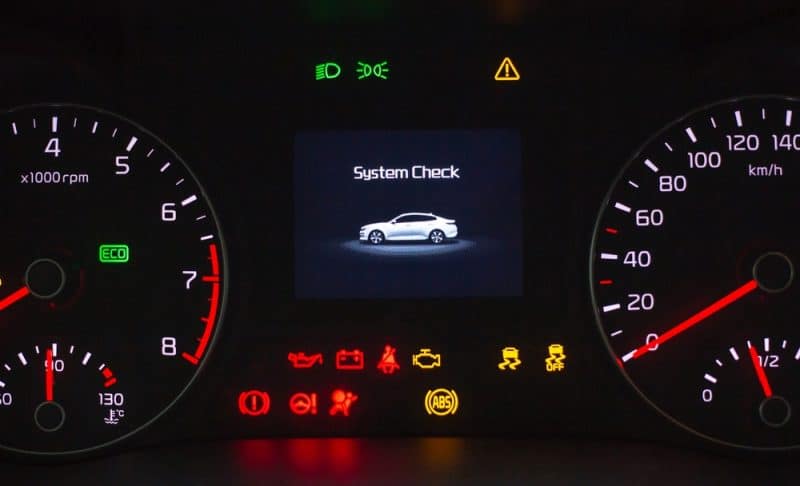Common Causes of U0100 Code and How to Fix Them


So your check engine light is on. Or maybe a whole bunch of error signals have turned on at once. Either way, you hook your car up to a code reader, and it’s showing a U0100 code.
So what do you do now?
We’re going to give you the rundown on how to fix U0100 code problems.
Symptoms of a U0100 Code
Before we go any further, let’s look at the main symptoms of a U0100 code.
To begin with, there are the ones we already mentioned: a check engine light, or all of your car’s warning lights coming on at the same time. But there are other things that could indicate a U0100 code to appear as well.
Here’s a are a few possible symptoms:
- – Your car doesn’t start, or the starter doesn’t even turn over when the ignition key is turned.
- – Your fuel economy is dropping for no apparent reason.
- – Your engine is delivering less power than usual for no apparent reason.
All of these problems are related to the same cause: there’s an issue with your car’s Power Control Module (PCM). The PCM controls a wide variety of your car’s systems, including the air to fuel ratio, the engine timing, and the starter. It’s connected to dozens of sensors throughout your automobile, from your tire pressure to your air intake temperature.
Possible Causes of a U100 Code
Before you determine if you need to replace your, you’ll want to look at other connected parts that may actually be to blame for your problem. Before we move on to diagnosing anything, let’s look at our possible causes:
- – Low battery
- – CAN C bus wiring fault
- – Wiring harness short
- – TIPM/BCM short
- – PCM power or ground
So, we’ve got a fair bit of ground to cover before we decide to go ahead and replace our PCM.
Diagnosing a U0100 Code
Now that we know what could be causing our error, let’s go over how to diagnose the problem. We’ll work through things methodically, to ensure that we’ve covered all of our bases before we decide that it’s actually time to replace our PCM.
After all, we don’t want to do that unless it’s absolutely necessary.
First, Check Your Battery
This may sound obvious, but check your voltage before you look at anything else. Your PCM requires a full charge to work properly. If your battery is pushing anything less than 12 volts, try replacing it with a new one before you move on to anything more complex.


Check For ECM and TIPM/BCM Trouble Codes
Before you start doing anything more complex, examine and additional error codes you might have encountered with the code reader. Check your car for any ECM or TIPM/BCM trouble codes. These can mean there are deeper, underlying issues with your engine, so we want to rule those possibilities out first.
If there’s an issue with your TIPM or BCM, try troubleshooting those parts. They’re on the same harness as the PCM, and can cause faults if they fail. If the problem is with your ECM, diagnose that carefully before proceeding.
Check the Wiring Harness
The next thing to do is to check your PCM wiring harness for faults. This is a pain, but it’s a necessary step in order to find a remedy. If you find any arcing, exposed wires, or damaged insulation, don’t mess around. Replace the wiring harness immediately and see if it solves your problem.
Check the CAN C Bus Connection
The next thing to do is check your Can C Bus. Use your code reader to see if there are any codes that indicate trouble with the CAN C bus. Then, use a multimeter to check both the (+) and (-) circuits on your CAN C bus for shorts. If everything reads normal, it’s time to check the PCM.
Check the PCM
If everything else is in good working order, you’ll need to check your PCM itself for trouble. Use your multimeter again, and check the (+) and (-) connections on your PCM. If there’s a short there, it may be possible for a mechanic to simply replace your PCM’s power supply. If power is flowing normally, the issue is with your PCM itself.
Fixing a U100 Code
If it turns out that the problem is with your PCM, you’ll need to replace it. You’ll want to be absolutely certain that you’re buying the PCM that your manufacturer recommends for your vehicle. We talk about more specifics in our PCM buying guide.
If You Need a Professional, We’re There
Fixing any kind of PCM malfunction can be a real headache. Not only does it require some technical knowledge, but replacing your PCM itself is can be intimidating. Luckily, we’re here to offer you the best possible solution should you need to replace your PCM. Our quality, remanufactured auto computers are available for up to 80% less than at the dealer and come with a lifetime warranty.
If you decide you need professional help, consider giving Solo PCMs a call. Our experienced technicians are always ready to assist, simply call us at (800)-886-9926, or contact us directly on our website.









